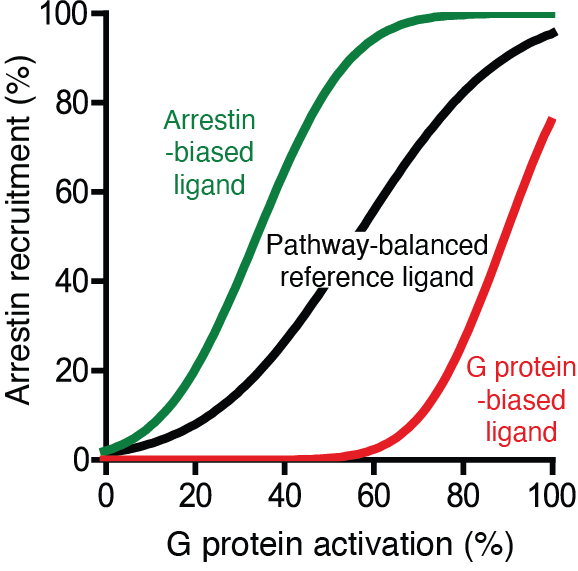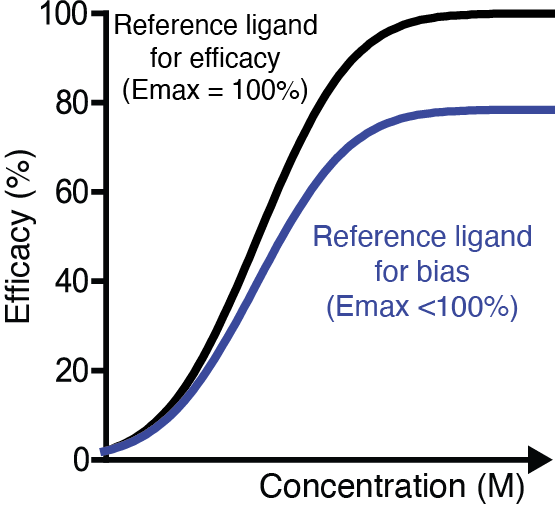Pathway-bias reference ligand selection
Pathway-bias studies uses a reference ligand for bias which has balanced signaling across the compared pathways in
the given biological and experimental system used. These ligands can be found in the Biased Signaling Atlas’ browser for
Pathway-preferring ligands
by applying a cut-off to the “Relative pathway activity (log(Emax/EC50))” which should be close to 0
(means pathway-balanced instead of pathway-preferring signaling). To increase the chance that at least one
of the viewed ligands are pathway-balanced also in your experiments, it is suggested to pick and test several
ligands and to prioritize ligands have been tested in similar biological and experimental systems.

Upon own testing of alternative potential reference ligand for pathway-bias, making a bias plot
is a good tool to identify the most pathway-balanced ligand to select as reference.
Physiology-bias reference ligand selection
Physiology-bias studies use a reference ligand for bias which is a physiological ligand. These ligands can be found in GPCRdb’s browser for Physiological ligands. If your receptor of interest has multiple physiological ligands, community guidelines recommends using the “principal” physiological ligand and not “secondary” physiological ligands, which can be filtered out in this browser. This is because secondary physiological ligands can also be physiology-biased relative to the principal physiological ligand.
Separate reference ligand for efficacy
If the reference ligand for bias is not a full agonist (does not reach the maximum efficacy of the assay),
a separate reference ligand should be used for efficacy measures. If needed, each pathway can use a distinct reference ligand
for efficacy as long as the efficacies of all ligands tested for bias, and the reference ligand for bias,
are measured relative the same reference ligand for efficacy.
For further information, see section “1. The choice of reference ligand …” in the community guidelines.

Example of a reference ligand for bias which is a partial agonist (does not reach maximum efficacy) and
therefore needs to be complemented with a separate reference ligand for efficacy.